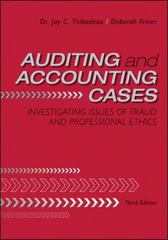WorldCom evolved from a long distance telephone provider named Long Distance Discount Services (LDDS), which had annual
Question:
WorldCom evolved from a long distance telephone provider named Long Distance Discount Services (LDDS), which had annual revenues of approximately \($1.5\) billion by the end of 1993. LDDS connected calls between the local telephone company of a caller and the local telephone company of the call’s recipient by reselling long distance capacity it purchased from major long distance carriers (such as AT&T, MCI, and Sprint) on a wholesale basis.1 LDDS was renamed WorldCom in 1995.
A change in industry regulation was the primary catalyst for WorldCom’s growth. That is, the Telecommunications Act of 1996 allowed long distance telephone service providers to enter the market for local telephone services and other telecommunications services, such as Internet-related services. Like many players in the industry, WorldCom turned to acquisitions to expand into these markets.
WorldCom’s revenues grew rapidly as it embarked on these acquisitions. Between the first quarter of 1994 and the third quarter of 1999, WorldCom’s year-over-year revenue growth was over 50 percent in 16 of the 23 quarters; the growth rate was less than 20 percent in only 3 of the quarters. WorldCom’s stock price experienced rapid growth as well, from \($8.17\) at the beginning of January 1994 to \($47.91\) at the end of September 1999 (adjusted for stock splits).
Importantly, its stock performance exceeded those of its largest industry competitors, AT&T and Sprint.2 MFS and Subsidiary UUNET In late 1996 WorldCom acquired MFS, which provided local telephone services, for \($12.4\) billion. In that transaction, WorldCom also gained an important part of the Internet backbone through MFS’s recently acquired subsidiary, UUNET.3 Brooks Fiber Properties, CompuServe Corporation, and ANS Communications In 1998 WorldCom purchased Brooks Fiber Properties for approximately \($2.0\) billion and CompuServe Corporation and ANS Communications (a threeway transaction valued at approximately \($1.4\) billion that included a five-year service commitment to America Online). Each of these companies expanded WorldCom’s presence in the Internet arena.
MCI In September 1998 WorldCom acquired MCI, using approximately 1.13 billion of its common shares and \($7.0\) billion cash as consideration, for a total price approaching \($40\) billion. MCI’s annual revenues of \($19.7\) billion in 1997 far exceeded WorldCom’s 1997 annual revenues of \($7.4\) billion. As a result of this merger, WorldCom became the second largest telecommunications provider in the United States.
SkyTel Communications and Sprint In October 1999 WorldCom purchased SkyTel Communications, adding wireless communications to its service offerings, for \($1.8\) billion. A few days after its Sky-Tel acquisition, WorldCom announced that it would merge with Sprint in a deal valued at \($115\) billion. In the proposed deal, WorldCom would gain Sprint’s PCS wireless business, in addition to its long distance and local calling operations.4 Challenges By 2000, WorldCom started to face some difficult challenges. For starters, World-Com faced fierce competition in its industry. In addition, WorldCom’s proposed merger with Sprint failed to receive approval from the Antitrust Division of the.........
Case Questions
1. Based on your understanding of inherent risk assessment and the case information, identify three specific factors about WorldCom’s strategy that might cause you to elevate inherent risk.
2. Comment about how your understanding of the inherent risks identified at WorldCom (in Question 1) would influence the nature, timing, and extent of your audit work at WorldCom.
3. If you were conducting an internal control audit of WorldCom, comment about how WorldCom’s acquisition strategy would impact the nature, timing, and extent of your audit work at WorldCom.
4. Based on your understanding of fraud risk assessment, what three conditions are likely to be present when a fraud occurs (that is, the fraud triangle)? Based on the information provided in the case, which of these three conditions appears to be the most prevalent, and why?
Step by Step Answer:

Auditing And Accounting Cases Investigating Issues Of Fraud And Professional Ethics
ISBN: 9780078110818
3rd Edition
Authors: Jay Thibodeau, Deborah Freier





